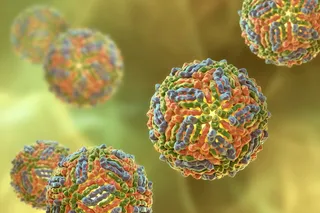“You better see this one,” my ER nurse, Elsa, urged. “Too pale, too pale.”
I had already sent in Jeff, my medical student, for what seemed like a routine case: a 30-something woman complaining of cough, low-grade fever and fatigue for a week. I reread the chart: pulse 114 (a tad high), fever 100.4, good blood pressure and oxygen saturation near normal at 96 percent. This sure looked like the flu.
Hustling over, I found Jeff diligently noting his findings in a small notebook. The patient — a thin, blond woman wearing a slightly startled expression — did her best to answer him.
“Hello,” I announced. “I’m Dr. Dajer, the boss.”
“Hello, boss. I’m Gail,” she riposted.
Elsa was right. Blond hair and fair skin notwithstanding, her complexion was bone white. “How long have you been sick?” I asked.
“About a week,” she answered. “I’m a wimp, I guess, but ...














